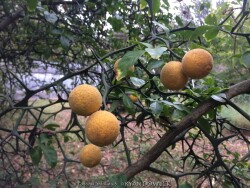
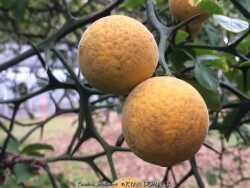

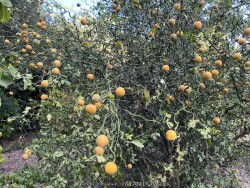

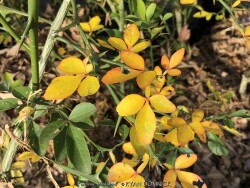
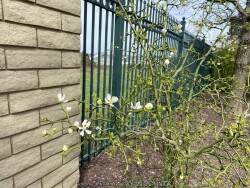


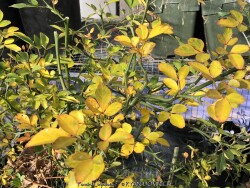
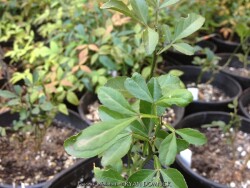

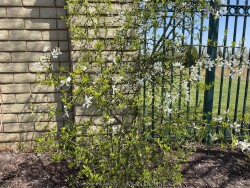
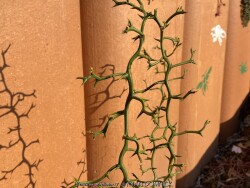
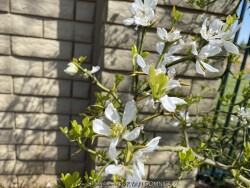
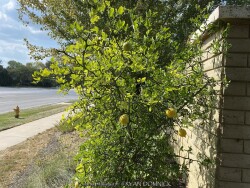
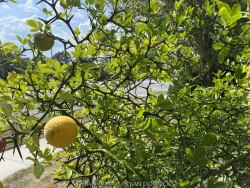

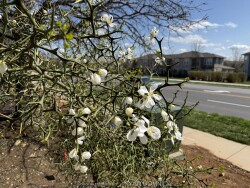

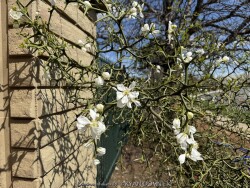
Plant Min Zone: 5b
Plant Max Zone: 9b
Sunlight: All Day Full Sun, Full Sun, Part Sun, Shade
Water / Rainfall: Low, Average, High
Soil Quality: Poor, Average, Rich
Bloom Season: Spring
Flower Color: White
Berry / Fruit Color: Orangish Yellow
Spring Foliage Color: Green
Summer Foliage Color: Dark Green
Fall Foliage Color: Dark Green, Gold
Evergreen Foliage: No
Winter Interest: Yes
Scented Flowers: Yes
Drought Tolerance: High
Wet-Feet Tolerance: Low, Medium
Humidity Tolerance: Medium, High
Wind Tolerance: High
Poor Soil Tolerance: Rocky Soils, Sandy Soils, Shallow Soils, Clay Soils
Height: 6' - 15'
Width: 4' - 10'
Growth Rate: Medium
Service Life: Extremely long: over 20 years
Maintenance Need: Low
Spreading Potential: Medium
Yearly Trimming Tips: Selectively Prune into Small Tree Shape over Period of Many Years or Top Each Year to Maintain Shrub Form.
Plant Grouping Size: Specimen Planting of 1-3, Small Grouping of 3-5
Best Side of House: South Exposure, West Exposure, East Exposure
Extreme Planting Locations: Survives Severe Drought
Ornamental Features: Long Blooming Season, Multiple Seasons of Interest, Rot Resistant / Strong Wood Tree, Easy to Eat Edibles, Exceptional / Colorful Foliage
Special Landscape Uses: Erosion Control, Noise / Wind Screening
Possible Pest Problems: None
Plant Limitations: Needs Frequent Pruning / Trimming, Has Thorns
Shippable in 2026: YES
Hardy Orange (Poncirus trifoliata) makes an extremely architectural, well-branched, deciduous shrub with numerous thorns reminding me of the Sleeping Beauty Thorn Forest. One of the hardiest close relative of Citrus, Poncirus trifoliata in native to China and Korea. Hardy Orange makes an excellent privacy hedge for background areas away from foot traffic. Although deciduous, plants grow so dense that is virtually impenetrable. Also effective as an accent specimen in the sense of being an interesting and unusual. The root stock is used for grafting in the citrus industry. Growth requirements are simple; plant in almost any soil in full sun to full shade. As for ornamental qualities, these shrubs are covered with aromatic white flowers in spring followed by "edible" green fruits that turn yellowish orange by fall. Fruits of this citrus relative are edible with a strong lemony flavor but are very acidic and seedy. Fruits can used to make marmalade or left on the shrub where they persist well into winter providing significant ornamental interest. Growth is more open in shade with less flowering and fruits. It survived -16 degrees F and a week of single digit highs in February, 2021 after regrowing from the ground. Oklahoma State University in Stillwater, OK once had dozens of sidewalks lined with trifoliate orange pruned into long perfectly shaped 4'x4' rectangular cuboid. The woody growth was so dense that one could stand on top of this hedge; I personally witnessed this with amazement.